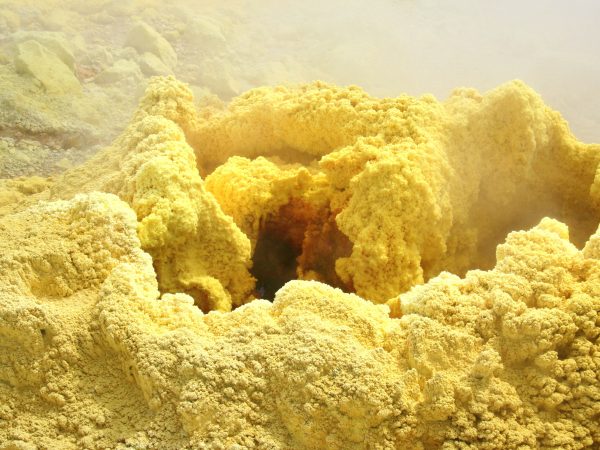Sulfur is a common industrial raw material. In the production process, solid sulfur is generally obtained by refining crude sulfur or sulfur residue from coking plants, and then producing liquid sulfur through a molding process. The solid sulfur is ground into powder, which is generally our common industrial sulfur powder. Have you ever learned about the molding method of sulfur?
Air forming process: In this process, liquid sulfur drips down from the top of the tower, air is blown from the bottom of the tower to the top of the tower, the two contact countercurrents, and the liquid sulfur is removed by the rising air in the process of falling liquid sulfur. Cooled and solidified, the sulfur particles are enriched in the bottom of the tower, and the particles from the bottom of the tower go directly to the storage tank without recirculation or filtration.
Slicing process: The slicing process is generally applicable to the sulfur forming process, which can be divided into the belt slicing process and the drum slicing process. Liquid sulfur is made into large slabs by means of stainless steel belts or rubber drums. The liquid sulphur is condensed by the water spray cooling cylinder, but the water does not contact the sulphur. Therefore, it does not affect the quality of the sulphur, just like water granulation. The solid sulphur is segmented at the end of the drum. This method also has some disadvantages: the sulfur produced by the slicing process is irregular, very brittle, and prone to dust problems, and a large amount of sulfur dust is generated during transportation, which may cause explosions, endanger safety, and pollute the environment; the reliability of the slicing process equipment Poor performance, prone to corrosion, and heavy maintenance work.
Air forming process: In this process, liquid sulfur drips down from the top of the tower, air is blown from the bottom of the tower to the top of the tower, the two contact countercurrents, and the liquid sulfur is removed by the rising air in the process of falling liquid sulfur. Cooled and solidified, the sulfur particles are enriched in the bottom of the tower, and the particles from the bottom of the tower go directly to the storage tank without recirculation or filtration.
Slicing process: The slicing process is generally applicable to the sulfur forming process, which can be divided into the belt slicing process and the drum slicing process. Liquid sulfur is made into large slabs by means of stainless steel belts or rubber drums. The liquid sulphur is condensed by the water spray cooling cylinder, but the water does not contact the sulphur. Therefore, it does not affect the quality of the sulphur, just like water granulation. The solid sulphur is segmented at the end of the drum. This method also has some disadvantages: the sulfur produced by the slicing process is irregular, very brittle, and prone to dust problems, and a large amount of sulfur dust is generated during transportation, which may cause explosions, endanger safety, and pollute the environment; the reliability of the slicing process equipment Poor performance, prone to corrosion, and heavy maintenance work.

